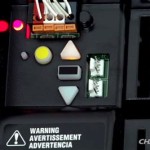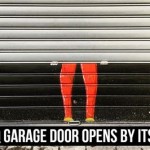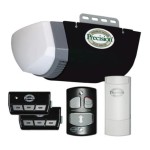Which Is Better: Chain or Belt Garage Door Opener?
Selecting the right garage door opener is crucial for home security, convenience, and overall functionality. Two primary types dominate the market: chain drive and belt drive openers. Both serve the same fundamental purpose – automating the opening and closing of a garage door – but they achieve this through distinct mechanisms, resulting in varying performance characteristics, costs, and suitability for different needs.
The core difference lies in the method used to move the trolley, which is the component that connects to the garage door and slides along a track. Chain drive openers utilize a metal chain, similar to a bicycle chain, to pull or push the trolley. Belt drive openers, on the other hand, employ a rubber or reinforced belt, often made of steel-reinforced rubber or fiberglass, to perform the same task.
Understanding the nuances of each type is crucial for making an informed decision that aligns with individual requirements and priorities. Factors such as noise level, durability, maintenance, and cost should all be carefully considered before selecting a garage door opener.
Noise Level: A Key Consideration
One of the most significant distinctions between chain and belt drive garage door openers is the level of noise they produce during operation. Chain drive openers are generally considerably louder than belt drive models. The metal-on-metal contact inherent in the chain drive mechanism creates a rattling or grinding sound, which can be disruptive, especially in homes with living spaces located above or adjacent to the garage.
Belt drive openers, due to their use of a rubber or reinforced belt, operate much more quietly. The belt glides smoothly along the track, minimizing friction and vibration, resulting in a significantly quieter operation. This makes belt drive openers a particularly attractive option for homeowners who value quiet operation, especially in attached garages where noise can easily permeate the living space.
The difference in noise level can be attributed to the materials used and the mechanics of the drive system. The chain drive involves the repetitive engagement and disengagement of metal links, creating vibrations and noise. The belt drive system's smooth, continuous belt minimizes these vibrations and reduces the overall sound output. The difference is often described as a significant improvement in the ambience of the surrounding area.
However, it's important to note that noise levels can also be affected by other factors, such as the age and condition of the opener, the quality of installation, and the type of garage door itself. A poorly maintained or improperly installed chain drive opener can be even louder, while a well-maintained and properly installed belt drive opener can be exceptionally quiet.
Ultimately, if noise is a primary concern, a belt drive opener is generally the preferred choice. The quieter operation can contribute to a more peaceful home environment, especially in homes where noise travels easily.
Durability and Maintenance Requirements
Both chain and belt drive openers are designed to be durable and provide years of reliable service, but they differ in their inherent longevity and maintenance needs. Chain drive openers, with their robust metal chain, are generally known for their durability and ability to withstand heavy use. The chain is less susceptible to stretching or breaking under heavy loads, making them a suitable option for heavier garage doors or high-traffic garages.
However, the metal chain requires regular lubrication to prevent rust, reduce friction, and ensure smooth operation. Neglecting lubrication can lead to increased wear and tear, reduced lifespan, and increased noise levels. It's recommended to lubricate the chain at least twice a year, or more frequently in dusty or humid environments.
Belt drive openers, while generally durable, are susceptible to wear and tear on the belt itself. Over time, the belt can stretch or crack, particularly under heavy use or in extreme temperatures. While reinforced belts are designed to resist stretching and cracking, they will eventually require replacement. The lifespan of a belt typically ranges from 7 to 10 years, depending on usage and environmental conditions.
Unlike chain drive openers, belt drive openers generally require less frequent lubrication. The belt itself does not require lubrication, but the other moving parts, such as the trolley and track, should still be lubricated periodically to ensure smooth operation and prevent premature wear. However, some argue that the lack of lubrication on the belt itself contributes to longer overall life as it is less prone to attracting and holding debris.
In terms of maintenance, chain drive openers require more frequent lubrication and may require occasional chain tightening or replacement. Belt drive openers require less lubrication but may require belt replacement after several years of use. Choosing the right opener therefore depends on the user's willingness to perform regular maintenance versus the potential cost of replacing the belt in the future.
The operating environments also influence the choice. For example, a garage exposed to extreme temperatures might be better served by a chain drive, as belts can become brittle in very cold climates or expand excessively in very hot climates. Coastal regions with high salt content in the air might be detrimental to chain life due to rusting, therefore a more robust belt-driven system may be preferred with more frequent component replacement.
Cost Considerations and Installation
The cost of a garage door opener is another important factor to consider. Chain drive openers are generally less expensive than belt drive openers. This is primarily due to the simpler design and lower cost of materials used in their construction. The lower initial cost can make chain drive openers an attractive option for budget-conscious homeowners.
Belt drive openers, with their more sophisticated design and use of specialized materials, typically command a higher price point. The higher cost reflects the quieter operation, smoother performance, and potentially reduced maintenance requirements associated with belt drive systems.
Installation costs can vary depending on the complexity of the installation and the installer's rates. Both chain and belt drive openers can be installed by homeowners with sufficient mechanical aptitude, but professional installation is generally recommended to ensure proper functionality and safety. Professional installation can add to the overall cost, but it can also provide peace of mind knowing that the opener is installed correctly and will operate reliably.
The cost of installation can be influenced by factors such as the existing wiring, the type of garage door, and the presence of any obstacles or obstructions. In some cases, additional wiring or structural modifications may be necessary, which can increase the overall cost of installation. It is advisable to obtain quotes from several installers before making a decision.
In addition to the initial purchase and installation costs, it's also important to consider the long-term operating costs. While chain drive openers may have lower upfront costs, they may require more frequent maintenance and lubrication, which can add to the overall cost over time. Belt drive openers, on the other hand, may have higher upfront costs but require less frequent maintenance, potentially resulting in lower long-term operating costs.
When evaluating the total cost, consider the lifespan of each opener type. While a chain drive might initially save money, a belt drive’s potentially longer lifespan with fewer maintenance requirements could provide better value effectively. The initial saving can be overshadowed if the chain drive needs to be replaced sooner.
The availability and cost of replacement parts is a different aspect of cost. Chain components are frequently cheaper and more widely available than belt system components. Belts are specialized and can be harder to source outside of the primary manufacturer, and occasionally costs can be significantly higher compared to the chain drive counterpart.

The Ups And Downs Of Chain Screw Belt Garage Door Openers A Better

Chain Vs Belt Garage Door Openers Which Is Better For You Dbar Doors

Chain Vs Belt Drive Garage Door Openers Which Is Right For You

Belt Drive Vs Chain Garage Door Opener Viking
Garage Door Opener Belt Vs Chain

The Ups And Downs Of Chain Screw Belt Garage Door Openers A Better

Belt Vs Chain Garage Door Opener Which Is Best For You

Belt Vs Chain Garage Door Opener Which Is Best For You

Chain Drive Vs Belt Garage Door Openers Spectrum Overhead

Belt Drive Vs Chain Garage Door Opener Which Is Best
See Also








